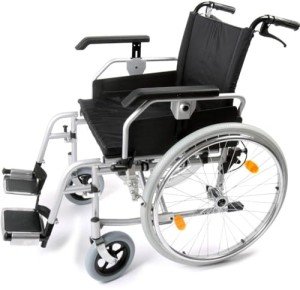3 Ways In Which The Bariatric Wheelchair 24 Inch Seat Can Influence Your Life

Bariatric Wheelchair Seat Width
Seat Width
Having the correct seat width is necessary to wheelchair users who spend longer periods in their chairs. Too narrow a seat will cause pressure on the hips and thighs which could cause sores or pressure points. Having too large a seat can likewise make it tough for the user to reach the hand rims to propel themselves or maneuver in small areas.
To measure the appropriate seat width an individual would rest on a chair normally and have their measurement taken across their lap at the largest point which is normally their hips. A wheelchair measuring tape can be utilized to determine this, however a yard stick is preferred as it avoids people from wrapping the tape around their hips which would provide an unreliable result.
The basic wheelchair seat width is 16" (narrow grownup), 18" (basic grownup), and 20" (large adult). For bariatric patients, a 24" seat is readily available. This sturdy extra wide bariatric wheelchair from Medline includes swing-away footrests, a carbon steel frame with rust- and chip-resistant chrome plating, and easy-to-clean vinyl upholstery. bariatric aids has a weight capacity of 500 pounds.
Seat Depth
Generally, the seat depth of a bariatric wheelchair was included 2" to the measurement taken at the user's largest point (typically their hips). bariatric wheelchair for sale near me was suggested to accommodate additional layers of clothing that may be used during winter. Nevertheless, this practice is ending up being less typical as wheelchair users have the ability to invest more time inside your home and are not wearing long coats. This makes the seat depth of a chair lesser when picking a bariatric wheelchair. However, it is still essential to select an option that uses adequate assistance for larger users.
The Medline folding additional large bariatric manual wheelchair includes a comfortable 24" seat width and a sturdy slide tube silver vein frame. It also has an adjustable axle and tool-free elevating legrests.
Seat Height
When it comes to identifying the right wheelchair seat width you need to constantly determine from the user's widest point which is usually their hips. You will also require to consider whether the user is going to be using a winter coat as this may include 2" to the width required.
When a wheelchair remains in usage it should just be run on level surface areas with the wheel locks totally engaged. This is to avoid the chair from being able to move inclines that are 10 degrees or higher. It is also crucial to bear in mind that any activity that may shift the center of mass in the chair ought to be finished with care. This consists of grabbing items that need the individual to lean out of their seat or attempting to stand from it.
Whenever you have the chair in use it is suggested that you regularly examine it for damage and oil any areas that are deemed required. For instance, the casters ought to be lubed by eliminating the caster fork and utilizing a multi-purpose grease to use to the caster stem bearings. Also, the foot plates can be changed by loosening the bolt and then moving them to the desired position. This enables the feet to sit conveniently on the footplate and avoids any pressure points from forming. This can be extremely uncomfortable for the user and if left ignored, can lead to pressure sores.
Weight Capacity
Bariatric wheelchairs are created to support more weight than basic wheelchairs. This makes them tougher and much better equipped to deal with falls. They are likewise normally bigger and broader, making them less maneuverable in tight areas than basic wheelchairs. They require cars with special ramps and lifts to load them, in addition to motorists who understand how to best transport them from one area to the next.

When picking a wheelchair, consider its weight capacity as it will be the main determining factor in whether it will accommodate your traveler's needs. The weight capacity of the chair is typically listed as a fixed load, implying that it suggests the amount of weight the chair can comfortably hold while stalling. However, some producers likewise list an active load that is based upon a drop test and can simulate the impact of somebody taking a seat in the chair. This may be a more dependable measurement of the weight limit, depending on your requirements.
If you plan to perform activities that shift your center of mass in the seat (such as grabbing things), be sure to have front casters pointed in a forward instructions and wheel locks engaged so the chair will not tip over. Likewise, examine that casters are lubricated regularly to prevent excessive wear and abrasions. The lubrication procedure involves eliminating the fork, separating the caster from the wheel, and greasing the caster stem bearings with high-quality multi-purpose grease.
